Bhopal disaster
description: a gas leak incident in India in 1984, considered the world's worst industrial disaster
25 results
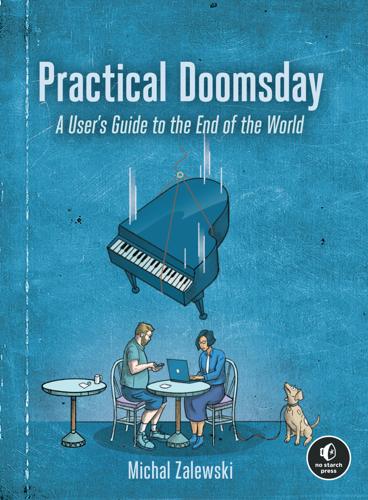
Practical Doomsday: A User's Guide to the End of the World
by
Michal Zalewski
Published 11 Jan 2022
“Impacts of Summer 2003 Heat Wave in Europe,” United Nations Environment Programme, March 2004, https://www.researchgate.net/publication/313059632_Impacts_of_summer_2003_heat_wave_in_Europe/. 3. “Great Blizzard of 1888,” Britannica.com, https://www.britannica.com/event/Great-Blizzard-of-1888. 4. “Dust Bowl,” History.com, August 5, 2020, https://www.history.com/topics/great-depression/dust-bowl/. 4. “Bhopal Disaster,” Britannica.com, https://www.britannica.com/event/Bhopal-disaster. 6. “Typhoon Nina–Banqiao Dam Failure,” Britannica.com, https://www.britannica.com/event/Typhoon-Nina-Banqiao-dam-failure. 7. “Texas City Explosion of 1947,” Britannica.com, https://www.britannica.com/event/Texas-City-explosion-of-1947. 8. “Beirut Explosion: What We Know So Far,” BBC News, August 11, 2020, https://www.bbc.com/news/world-middle-east-53668493/. 9.
…
Whether it’s a fire at a chemical plant or the collapse of a tailings dam at an upstream mine, many fairly common types of industrial incidents can force entire towns to stop using tap water or to shelter indoors—sometimes for days. Occasionally, such accidents can rival the forces of nature in their destructive potential. The nuclear meltdowns at Chernobyl and Fukushima are often thought of as the worst of the worst, but they actually pale in comparison with the track record of more conventional industries. The Bhopal disaster in 1984, involving the release of a volatile isocyanate from a pesticide manufacturing plant in India, caused more than 500,000 serious injuries and killed as many as 20,000 residents.5 The 1975 Banqiao dam failure in China may have killed more than 200,000—some perishing in the floodwaters, many more dying from the resulting famine and plague when millions of homes were washed away.6 Accidents involving the storage of nitrates live in infamy too.
…
Numbers 2FA (two-factor authentication), 108 3M gasmaks, 177 3M respirators, 175 9-11 attacks, 26–27 9mm Luger, 214 28 Days Later, 32 .38 Special, 214 A Abine, 110 accidental injuries car accidents, 96–98 firearms, 196, 217–218 industrial accidents, 19–20, 177 statistics on, 12–13 action plan, 121–125 Acxiom, 110 addiction, 99–100 adverse judgments, 69–70 advertising industry, 110 AGI (artificial general intelligence), 42 AI winter, 42 AIDS, 32 alarm systems, 112 alcohol use, 100–101 Alinco, 188 alkaline batteries, 154–155 allergies, 150 aluminum zirconium tetrachlorohydrex gly, 149 amateur radio, 188–189 ammunition, 217 amoxicillin, 151 anesthetics miconazole nitrate, 150 animal-borne diseases, 176 antibiotics, 151 antifungal cream, 150 anti-itch cream, 150 antiperspirant, 149 antivirus programs, 106 Anytime Mailbox, 111 apocalypse, predictions of, 30–31 appliances, 152–159 APRS (Automatic Packet Reporting System), 188–189 Aquatabs, 134 Aqua-Tainer products, 133 AR-15, 215–216 Arm & Hammer, 149 Armero volcano eruption, 35 artificial intelligence, 31, 42 asteroids, 34 asthma, 150 atom bombs, 30–31, 39–40, 178–180 Augason Farms, 141 auto accidents, 96–98 auto insurance, 51–52 auto repairs, 163–164 automated billing, 51 automatic center punches, 164 Automatic Packet Reporting System (APRS), 188–189 avian flu, 26 B backyard gardens, 144 bail-ins, 22 bailouts, 68–69 baking soda, 148 ballistic vests, 129–130 bank accounts, 68–69, 76–77 banking crises, 22, 68–69 Bankrate.com, 10 Banqiao dam failure, 20 BaoFeng, 188 Barbot, Oxiris, 25 barter, 58–59, 73–74 batteries, 154–155, 163 bear spray, 171 BeenVerified, 110 Beirut nitrate explosion, 20 benzalkonium chloride (BZK) wipes, 149 benzocaine ointments, 151 The Bet (Sabin), 8 Bhopal disaster, 20 bicycles, 166 billionaires, 73 bird shot, 217 birth certificates, 166–167 Bitcoin, 66–68 Black Death, 32, 176 black holes, 35 bleeding, 151, 177 blizzards, 18 blockchain, 67 blunt instruments, 208 Bogle, John C., 80–81 bonds, 77–78 books, 191–192 bows, 208–209 brain in a jar, 42 break-ins, 111–112, 201 bromadiolone, 177 bromethalin, 177 Brooks, Max, 30 buckshot, 217 bug-out situations, 165–171 bulletproof vests, 129–130 bullets, 217 Bureau of Justice Statistics, 13 burglaries, 13, 111–112, 201 Butte fire complex, 18 BZK (benzalkonium chloride) wipes, 149 C caffeine pills, 150 California Consumer Privacy Act (CCPA), 111 California Gun Laws (Michel and Cubeiro), 196 calorie needs, 138–139 calorie restriction, 117–118 cameras, 201 camping, 167–168, 171 Canberra MRAD113, 179 candles, 154 Capital in the Twenty-First Century (Piketty), 72 car accidents, 96–98 car break-ins, 111 car insurance, 51–52 car repairs, 163–164 career planning, 91–93 cash, 49–55, 75–76 Cato Institute, 23 CB (citizens band) radios, 186 CCPA (California Consumer Privacy Act), 111 CDC (Centers for Disease Control and Prevention), 13 cell phones, 155–156, 181 cetirizine, 150 chains, 163 chainsaws, 162 Champion generators, 156 Charlie’s Soap, 149 Chernobyl Nuclear Power Plant, 20, 31 Chicago Sunday Tribune, 37–38 chlorination, 134 choking, 104 cholecalciferol, 177 Christmas Island, 33 citizens band (CB) radios, 186 class tensions, 72–73 clathrate gun hypothesis, 33 cleaning, 148 climate change, 18, 33–34 clip-on pulse oximeters, 150 CME (coronal mass ejection), 35–36 cocaine, 100 coincidence of wants, 58 coins, 59–63 collectibles, 86–87, 201 Colorado floods, 11 come-alongs, 162–163 commodity futures options, 71, 81–83 commodity money, 60 communications, 181–190 community property, 125 compensation, 50 confiscatory taxes, 72–73 constitutional carry, 206 consumer debt, 53–54 consumer lending, 63 consumer prices, 70–71 contraceptives, 150 convictions, 6–8 cooking, 158 CoreLogic, 110 coronal mass ejection (CME), 35–36 cosmic threats, 35–36 cost of living, 11 cough, 150 court fights, 69–70 coveralls, 175 COVID-19 pandemic, 25–26, 174–176 CPR procedure, 151–152 credit cards, 53–54 Cretaceous–Paleogene extinction, 34 criminal victimization, 13 crisis indicators, 124 critical decision points, 124 crony beliefs, 6–8 crossbows, 208–209 cryptocurrencies, 66–68, 84, 87 Cubeiro, Matthew D., 196 currencies, history of, 58–68 customer data, 110 cuts, 150 Cypriot debt crisis, 69, 73 D data brokers, 110 Datrex, 143 d-CON, 177 DDT (dichlorodiphenyltrichloroethane), 176 De Waal, Frans, 20 death causes of, 13 planning, 14–15, 124–125 debt, 10–11, 50, 53–54, 59–60 debt crisis, 22 Debt: The First 5000 Years (Graeber), 59 de-escalation skills, 13 defensive driving, 96–98 dehydration, 134 DeleteMe Help Center, 110 deltamethrin, 176 dental care, 151 dental picks, 151 developing countries, 33–34 dextromethorphan, 150 diarrhea, 150 dichlorodiphenyltrichloroethane (DDT), 176 Didion, Joan, 122 dietary supplements, 180 diets, 115–118 digital communications, 188–189 Digital Mobile Radio (DMR), 188 diindolylmethane (DIM), 179 dinosaurs, 34 diseases, 32–33, 173–177 dishwashing, 148 Diversey Oxivir Five 16, 176 Diversey PERdiem, 148 diversified portfolios, 88–-90 divorce, 69–70 documents, 166–167 Dogecoin, 68 dogs as burglary deterrent, 112 domestic terrorism, 26–27 driving habits, 96–98 drowning, 104 drugs, 99–101, 150 D-STAR, 188 “duck and cover,” 39 DuPont Tychem coveralls, 175 dust storms, 18 duty to retreat, 205 Dynarex, 149 E earthquake probabilities, 19 Ebola, 26, 32 economic crises, 22–24 economic hardships, 10–11 economic persecution, 72 ecosystem collapse, 34 Ehrlich, Paul R., 7–8, 30 elastic bandages, 150 electricity, 36, 152–159 electrolyte imbalance, 150 emergency ration bars, 143 emergency repairs, 162–163 EMP (electromagnetic pulse), 40–41 employment, 91–93 encephalitis lethargica, 25 Energizer Ultimate batteries, 155 entertainment, 191–192 epinephrine inhalers, 150 Epsilon Data Management, 110 Equifax, 110 equities, 79–81 escheatment, 77 eugenics, 37 eugenol, 151 evacuation, 165–171 exercise, 117–118 expenses, 51–52 Experian, 110 Expose, 176 extinction, 34 extraterrestrial life, 43 extreme weather, 18, 156–158, 168 F Facebook, 109, 110, 155 fall injuries, 98–99 false vacuum decay, 35 Family Radio Service (FRS), 186–187 farming, 137 Federal Emergency Management Agency (FEMA), 19, 132 fever, 150 fiat money, 64–65 fiction, 29–30 fighting, 113, 206 financial problems, 10–11 firearms, 196–197, 211–219 fires Butte fire complex, 18 house fires, 11, 18, 103–104 wildfires, 18, 44, 124 firewood, 158, 170 first aid, 149–152 fitness, 115–118 fixed-blade knives, 170 flashlights, 154–155 flat tires, 163 floods, 19, 147–148 floss, 151 flu, 25 fluticasone propionate, 150 FMJ (full metal jacket) bullets, 217 food-borne illness, 141–142 food preparation, 158 food security, 137–144 foraging, 168–169 foreclosures, 10–11 foreign currencies, 78–79 Forgey, William W., 152 Forster, E.
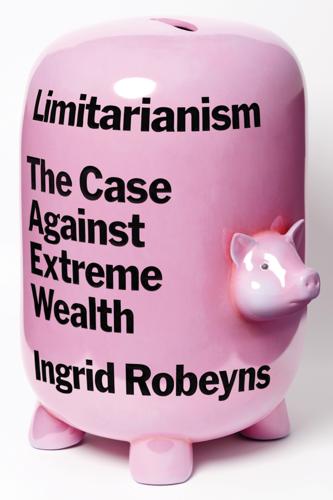
Limitarianism: The Case Against Extreme Wealth
by
Ingrid Robeyns
Published 16 Jan 2024
But whether enough has been changed to protect us, the common people who pay our taxes and have negligible economic power, is a question that will only be answered when the next financial crisis hits.20 Beyond this, there are also frightening cases of corporate irresponsibility that have led not only to the public shouldering a considerable financial burden, but also to a large number of fatalities. All too often in such cases, businesses will try to wash their hands of a situation as quickly as possible, so that they and their shareholders can avoid paying compensation for the harm done. Perhaps nowhere is this clearer than with the Bhopal disaster. Bhopal is the capital of the Indian state Madhya Pradesh, where on December 3, 1984, the worst chemical disaster in human history took place. It occurred in the pesticide plant of an Indian subsidiary of Union Carbide, an American corporation. The plant had serious safety problems that were known both to the company and to the local government.
…
If they want to redeem themselves, they should donate a significant proportion of the value of those stocks to organizations that care for the victims. Unfortunately, the chances are that people who currently own stock in Union Carbide, or in its successor, Dow Chemical Company, have never heard of the Bhopal disaster. In 2022 I mentioned this case during a lecture in New York, and I asked who had heard of the Bhopal case—no one in the room raised their hand. Yet in India, in Bhopal, there are still many people who suffer on a daily basis because of this grave injustice: because the site is still not cleaned up, because compensation has been insufficient, or because some survivors later became parents to severely disabled children, who now need full-time care, which their parents need to provide without any meaningful public support.
…
Lomasky, “Liberty after Lehman Brothers,” Social Philosophy & Policy 28:1, (2011), pp. 135–65; Rutger Claassen, “Financial Crisis and the Ethics of Moral Hazard,” Social Theory and Practice 41:3 (2015), pp. 527–51; and Lisa Herzog (ed.), Just Financial Markets? Finance in a Just Society (Oxford: Oxford University Press, 2017). 21. Edward Broughton, “The Bhopal Disaster and its Aftermath: A Review,” Environmental Health 4:6 (2005), pp 1–6, data on p. 3. 22. Sanjoy Hazarika, “Bhopal Payments by Union Carbide Set at $470 Million,” New York Times, February 15, 1989, nytimes.com/1989/02/15/business/bhopal-payments-by-union-carbide-set-at-470-million.html. 23.
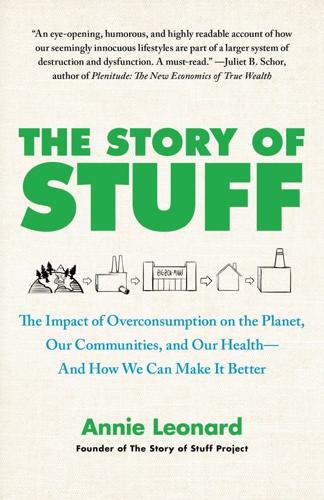
The Story of Stuff: The Impact of Overconsumption on the Planet, Our Communities, and Our Health-And How We Can Make It Better
by
Annie Leonard
Published 22 Feb 2011
The survivors’ demands include: a cleanup of the abandoned, leaking factory; the provision of clean drinking water, since theirs has been contaminated; long-term health care and economic and social support for those who lost family members or are unable to work due to gas-related illnesses; and justice for those responsible for the shoddy factory maintenance.160 Elsewhere, news of the Bhopal disaster made headlines internationally and got a lot of people worried, from corporate executives of other chemical companies to residents of communities living near chemicals plants. Union Carbide had a factory in Institute, West Virginia, which it had previously said was nearly identical to the Bhopal plant.161 After the Bhopal disaster, workers and residents in Institute and other chemical-industrial communities began asking questions. Which toxic chemicals was the local factory using?
…
Marine Protection, Research, and Sanctuaries Act (aka Ocean Dumping Act, 1972) Prohibits ocean dumping.175 Notice something that all these have in common? Many were created before any of us had cell phones or Internet access; some were established even before fax machines. Lots were created before Rachel Carson’s Silent Spring, before the Bhopal disaster, before climate change was a household topic. While the intentions at their founding were good, many of these agencies and laws are now simply out of date. Even the more recent amendments are often out of date. Environmental health threats have changed and continue changing while our understanding of those threats has evolved greatly, but the laws and regulatory agencies haven’t kept up.
…
INDEX Abacha, Sani, 31 Abu Dhabi, 66 Acetone, 60 Advertising, 160, 163–168, 251, 256 Advisory committees, 99–100 Afghanistan, 243, 244 Agent Orange, 54, 213 Air freight, 115, 119 al-Qaeda, 26 Alameda County Waste Management Authority, 211 Alien Tort Claims Act (ATCA), 258 Allan, John, 17 Alloys, 44 Aluminum, 21, 59 Aluminum cans, 64–68, 196 Amazon, 116, 118–121 Amazon River, 66 American Chemistry Council, 93, 99 American Cyanamid, 222 Ammonia, 60, 61 Amnesty International, 28, 32 Anderson, Ray, 19, 185, 187–189 Anderson, Warren, 92 Anheuser-Busch, 196 Antibacterial products, 79 Antimony, 59 Appalachia, 35, 36 Apple Computer, 57, 59, 108, 109, 203, 206 Aral Sea, 46 Arsenic, 13, 15, 35, 59, 73, 203 Autoclaving, 201 Automobile industry, 159–160, 164 Bangladesh, 12–14, 49, 184, 193, 219–221 Barber, Benjamin, 169, 172 Basel Action Network (BAN), 205, 227, 228 Basel Convention on the Control of Transboundary Movements of Hazardous Wastes and Their Disposal, 227, 258 Batker, Dave, 246 Batteries, 203, 204 Bauxite, 21, 64–65 Beavan, Colin, 147, 239, 245 Bechtel, 140 Bee, Rashida, 91 Benin, 45 Benyus, Janine, 105 Benzene, 30, 48 Beryllium, 203 Beta-hexachlorocyclohexane, 79 Beverage containers, 64–68, 194–195 Bezos, Jeff, 118 Bhopal disaster, India, 90–93, 98 Big-Box Swindle (Mitchell), 121, 125 Big Coal (Goodell), 36 Bingham Canyon copper mine, Utah, 21 Biological oxygen demand (BOD), 10–11 Biomimicry, 104–105 Bioplastics, 230–231 BioRegional, 40 Birol, Fatih, 29–30 Birth defects, 60, 74, 76, 91 Bisignani, Giovanni, 115 Bisimwa, Bertrand, 28 Bisphenol A (BPA), 78, 99–100 Bleach, 15, 48, 56 Blood Diamond (movie), 26, 28 Body burden testing, 78–80 Bolivia, 140 Books, 51–56, 118–120 Borden Chemical, 222 Borneo, 3 Boron, 59 Boston Tea Party, 127 Bottle Recycling Climate Protection Act of 2, 195 Bottled water, 16 Bowling Alone (Putnam), 149, 238–239 Bräutigam, Deborah, 37 Brazil, 8, 66, 67 Breast milk, 81, 82–83, 91, 171 Bridge at the End of the World, The (Speth), 167 Brockovich, Erin, 30 Bromines, 48 Bruno, Kenny, 225 Burkina Faso, 45 Burundi, 27 Bush, George H.
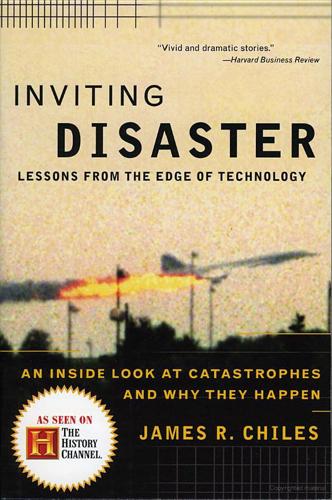
Inviting Disaster
by
James R. Chiles
Published 7 Jul 2008
His efforts kept thousands of passengers at a safe distance from an obscure and money-losing pesticide plant that had just become the site of the worst chemical disaster of all time. Although the geographic origin of the deadly cloud of methyl isocyanate was immediately clear, the cause of the Bhopal disaster was not. There are at least three theories as to what triggered the chemical release. There is the Indian government’s official explanation, as well as two other stories. An image to explain what happened at Bhopal came to me while touring an underground coal mine called the Pioneer Tunnel, preserved as a historical site for tourists at Ashland, Pennsylvania.
…
Because its metal was thinner than the boiler walls, the safety valve should have been set to open forty-five pounds per square inch lower than usual to compensate for the difference. There aren’t many mea culpas uttered in the world of industrial catastrophes. No matter what a government agency or court has to say, companies in such a fix will beg to differ. Just as Union Carbide blamed the Bhopal disaster on a disgruntled employee, one of the owners of the Sultana blamed its catastrophe on Rebel saboteurs. It takes constant support from top management to keep an organization running safe, says Richard Jones, vice president of industrial insurer Hartford Steam Boiler. “If the attitude comes only from the bottom up, it will be snuffed out.” 12: MACHINE MAN SURVIVING AND THRIVING ON THE NEW FRONTIER In 1886 the tramp steamer Trojan arrived at a small port north of Liverpool to take on cargo.
…
Aberdeen Testing Center, 247 AeroPeru 757 Flight 603 airliner, crash of, 56, 310 Aerospatiale ATR-42 transport airplane, crash of, 254–55 Airbus airliners, 3, 255 Air France Concorde, crash of, 4–5, 312 Airship Guarantee Company, 69–70 Albin, Fred, 191–92 Alexander, Dick, 194–95 Aloha Airlines 737 airliner, blowout of upper fuselage skin of, 7, 307 Altair Engineering, 184–85 American Airlines, 120–21, 124 American Airlines DC-10 Flight 96 airliner, cargo-door blowout of, 117–18, 123, 125–28, 134, 248, 253, 286, 302 American Society of Mechanical Engineers, Boiler Code of the, 60 American Trans Air DC-10 airliner, oxygen canister fire on, 153 ammonium nitrate, 208, 215–22 in BASF factory explosion, 218–19, 298 in Texas City docks explosions, 216–17, 219–21, 299 ammonium perchlorate (AP), 136, 308 Anderson, Warren M., 260–61 Andersonville, prison at, 271 Ansoff, Igor, 4 Apollo 1, 142–50 casualties of, 142–43, 149, 301 construction of, 146–47 oxygen-enriched fire in command module of, 91, 111, 142–45, 147, 149–50, 188, 286, 288–89, 301 testing of, 147–49, 301 Apollo 7, 278 Apollo 10, 186 Apollo 11, 70 Apollo 12, 183 Apollo 13, 108, 179 fire in command module of, 188–89 liquid oxygen tank problem of, 143, 181–83, 185–90 overheating of oxygen tank in service module external bay of, 70, 143, 183, 187, 189, 302 thermostat problem of, 186–89, 302 training for near disasters on, 119–20 Apollo program, 92, 230 Atomic Energy Commission (AEC), 43–44, 101 AT-6 trainer airplanes, communication errors in, 243–44 Audi 5000 sedan, alleged sudden-acceleration problem of, 237–39 Aviation Safety Reporting System, 292 Babcock & Wilcox, 52, 54–55, 61, 119 Badische Anilin und Soda Fabrik (BASF), explosion at, 218–19, 298 Baldwin Hills Dam, collapse of, 190–91, 301 “Ballad of Casey Jones,” 257, 296 Banqiao and Shimantan Dams, failure of, 13, 277, 303 Barber, Jonathan, 275–76 barrage-balloons, flying airplanes into cables hung from, 208 Beauvais Cathedral, collapse of choir vaults of, 89 Beech Aircraft, 186 Bell, Arthur, 89–90 Belle Memphis, 270 Bell JetRanger helicopters, 223–24 Bell 206 medevac helicopter, crash of, 144 Benet, Stephen Vincent, 176 Berkun, Mitchell, 177–78 Bhopal disaster: casualties in, 259, 261, 263, 266–67, 306 cause of, 259–60, 263–68, 274, 306 release of toxic chemicals in, 166, 259–68, 274, 281, 286, 306 BHP Port Kembla Steelworks, damage caused by short circuit at, 141–42 Binks, Joe, 89–90 Black, Ken, 225–26 Black Sea port, explosion of fertilizer-carrying ship at, 221 Blandy, W.
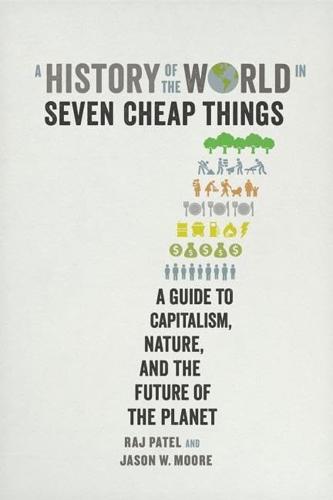
A History of the World in Seven Cheap Things: A Guide to Capitalism, Nature, and the Future of the Planet
by
Raj Patel
and
Jason W. Moore
Published 16 Oct 2017
That the reparation was spent in ways contrary to its purpose is a much better problem to have than not to have any funds at all. It’s also important to remember that states are not the only bodies culpable for damage and subsequent reparation. Corporations owe debts too. Consider Dow Chemical—now the owner of Union Carbide, responsible for the Bhopal disaster—or the corporations whose coffers have been filled with, in the words of the Movement for Black Lives, “wealth extracted from our communities through environmental racism, slavery, food apartheid, housing discrimination and racialized capitalism.”17 Yet the balance of reckoning will never level.
…
See also specific nations assembly lines, 98, 100, 104, 109, 135 Atkins, John, 130 Australia, xiv–xv map 1; Aboriginal Australians, 99, 200 automotive industry, 108–9 Bacon, Francis, 53–54 Bahia, xiv map 1, 215n56 bankers/banking: credit, 68, 87, 89, 227n63; in Dutch Republic, 77, 88; Genoese banking, 74–77; in Germany, 15–16; governments and, 28, 66, 85–88; Great Recession, 40; IMF and, 89; in London, 77; New World natures and, 28, 77; in U.S., 77. See also Cheap Money; financial sector; Genoese banking Bhopal disaster, 209 Biidewe’anikwetok, 211 Black Death, 11–13, 70, 183–85, 238n9 blood ranking, 185–86 Bohemia, 70 Bois, Guy, 10 Bolivia, 179, 200–201 Borlaug, Norman, 149–150 Bosch, Carl, 148, 172, 172–74 Braudel, Fernand, 68, 86, 139, 144, 160, 231n8 Brazil, xiv map 1; deforestation, 174; food price changes, 154 fig. 5; industrialization in, 100, 101; Muslim slave uprising, 106; planetary ecological revolution in, 52–53; slave trading, 31; as sugar frontier, 16, 32–33 British empire: agricultural imports, 103–4; agriculture of, 141–43, 145; botanical imperialism, 147; cotton industry and, 103, 106; Ireland and, 51–52, 190–92, 239n26; labor organizing, 175; labor organizing in, 106; Nigeria and, 128–29, 175; Reclaim the Streets movement, 206.
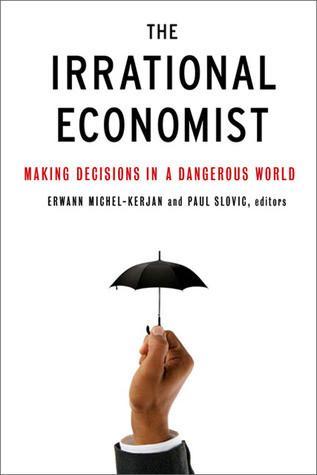
The Irrational Economist: Making Decisions in a Dangerous World
by
Erwann Michel-Kerjan
and
Paul Slovic
Published 5 Jan 2010
We found that all of them were now focused on how to avoid a Bhopal-like disaster. They eventually adopted a set of innovations that could have been instituted prior to Bhopal. As we reported in two papers written on this topic, it took a catastrophic accident to focus the attention of this firm and most major chemical companies on ways to reduce risks. The Bhopal disaster was the impetus for establishing, in 1985, the Wharton School’s Risk Management and Decision Processes Center, where Paul Kleindorfer and I served as co-directors. Its mission from the outset has been to study behavior by individuals, firms, and governments with respect to low-probability, high-consequence events so that more effective strategies can be prescribed for reducing losses from future disasters and aiding the recovery process.
…
See also Game Theory; Theory of Games; Ultimatum Games Batson, Daniel Bayes, Thomas Bayes’ Rule Bayesian updating Behavior acceptable awareness and collective Behavior (continued) decision making and descriptive models of individual learned managerial market motivating myopic neuroscience and rational social uncertainty/risk and Behavioral biases Behavioral data, linking(fig.) Behavioral explanations Behavioral research Behavioral science Beliefs Benefits concentrated extreme sharing uncertain Bhopal disaster Black Death Blair, Tony Bonds catastrophe municipal Bowman, Edward Brain emotional/rational parts of Brain activity unfair offers and(fig.) Brain sciences. See also Neuroscience Bubble-has-burst hypothesis Bush, George H. W. Bush, George W. Camus, Albert Cancer risks(table) Cap-and-trade programs Capital intermediary shortage Carbon dioxide, reduction of Carson, Rachel Catastrophe bonds (cat bonds) Catastrophe management Catastrophes accelerating rhythm of environmental facing financial government intervention and human behavior in large-scale learning from losses from memories of political responses to potential for risks from weather-related Change policy predicting See also Climate change Chemical accidents, reducing losses from Chevalier, Michel Choice alternative ambiguity and(fig.)
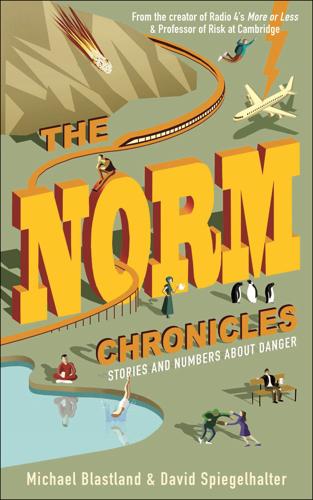
The Norm Chronicles
by
Michael Blastland
Published 14 Oct 2013
Accident Analysis & Prevention. 2010 Jan;42(1):44–9. 19. h2g2. The London Beer Flood of 1814. 2012. Available from: http://h2g2.com/dna/h2g2/A42129876. 20. Wikipedia. Boston Molasses Disaster. 2012. Available from: http://en.wikipedia.org/wiki/Boston_Molasses_Disaster. 21. Wikipedia. Bhopal Disaster. 2012. Available from: http://en.wikipedia.org/wiki/Bhopal_disaster. 22. See note 5 above. 23. Albin, M., Horstmann, V., Jakobsson, K., Welinder, H. Survival in Cohorts of Asbestos Cement Workers and Controls. Occup Environ Med. 1996 Feb 1;53(2):87–93. 24. Miller, B.G., Jacobsen, M. Dust Exposure, Pneumoconiosis, and Mortality of Coalminers.
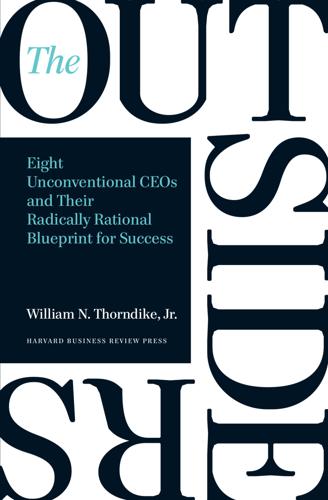
The Outsiders: Eight Unconventional CEOs and Their Radically Rational Blueprint for Success
by
William Thorndike
Published 14 Sep 2012
Under Ralston’s management, distribution was expanded, redundant costs were eliminated, new products were introduced, and cash flow grew significantly, creating significant value for shareholders. Next, in 1986, Stiritz made his largest purchase ever, acquiring the Energizer Battery division from Union Carbide for $1.5 billion, equal to 20 percent of Ralston’s enterprise value. Union Carbide was struggling in the wake of the Bhopal disaster, and its battery business, despite a strong brand name, had long been a neglected, noncore operation. Like ITT, Union Carbide was a motivated seller lacking in consumer products marketing expertise. Stiritz prevailed in an auction, paying an admittedly full price for an asset he felt had a uniquely attractive combination of a growing duopoly market and undermanaged operations.
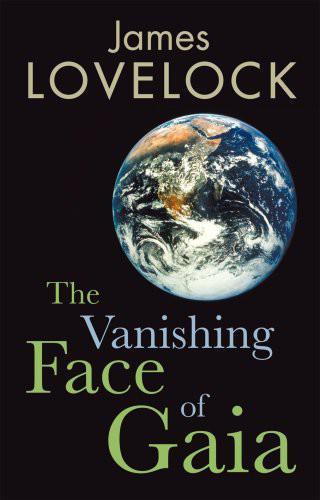
The Vanishing Face of Gaia: A Final Warning
by
James E. Lovelock
Published 1 Jan 2009
It was a trivial event compared with the industrial disaster in the city of Bhopal in India where, in the early hours of the morning of 3 December 1984, an accident at a pesticide plant released forty tons of methyl isocyanate gas into the night air. The cloud drifted over the town and killed 3,800 people instantly and many times more in the weeks that followed. The Bhopal disaster is usually cited as the world’s worst industrial disaster, but how often do the media mention it compared with the much lesser disaster at Chernobyl? At Chernobyl the smoke from the burning reactor mingled with the air mass moving westwards towards Europe. Radioactivity can be measured with instruments of extraordinary sensitivity, so it was not surprising that the cloud was detected as far away as the UK.
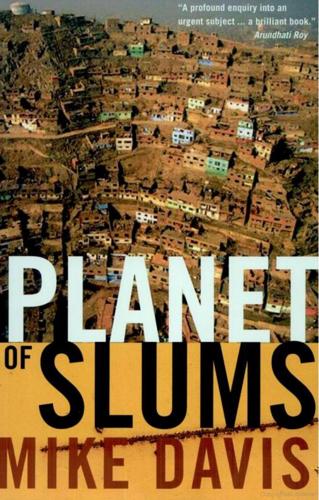
Planet of Slums
by
Mike Davis
Published 1 Mar 2006
Up to the moment when they found their children dying in the streets, poor squatters had no idea of what was produced in the plant or the apocalyptic hazard posed by massive quantities of methyl isocyanate.29 Slum-dwellers, on the other hand, are acutely aware of the dangers posed by the wild traffic that gridlocks the streets of most Third World 28 Joel Simon, Endangered Mexico: An Environment on the Edge, San Francisco 1997, p. 157. 29 Amnesty International, Clouds of Injustice: The Bhopal Disaster 20 Years On, London 2004, pp. 12, 19; Gordon Walker, "Industrial Hazards, Vulnerability and Planning," in Main and Williams, Environment and Housing in Third World Cities, pp. 50—53. cities. Sprawling urban growth without counterpart social investment in mass transit or grade-separated highways has made traffic a publichealth catastrophe.
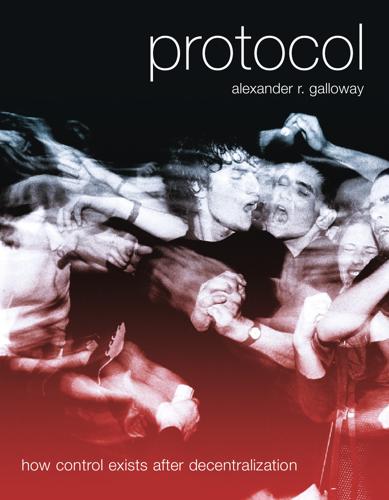
Protocol: how control exists after decentralization
by
Alexander R. Galloway
Published 1 Apr 2004
On December 4, 2002, The Thing’s connection was interrupted by Verio, its network provider, on the grounds that The Thing had infringed its service contract with Verio. The contract was terminated a short while later, leaving The Thing, its members, participants, and some two hundred projects in limbo. According to Verio, the perceived cause of the disconnection was an art-activist group known as The Yes Men. On the eighteenth anniversary of the Bhopal disaster, in which a Union Carbide/Dow chemical accident resulted in the illness and death of thousands of Bhopal citizens, The Yes Men had circulated a fabricated press release from the Dow corporation disavowing any responsibility for the accident. The fake press release was intended not only to continue to raise awareness of such incidents, but to raise issues concerning ongoing discourses of globalism and corporate management of information networks.
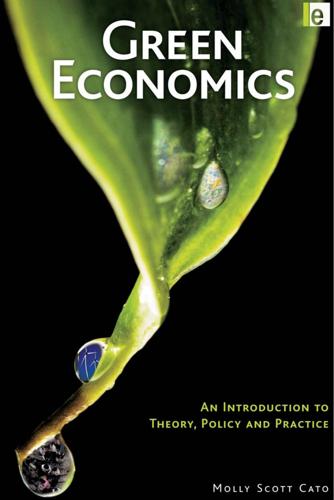
Green Economics: An Introduction to Theory, Policy and Practice
by
Molly Scott Cato
Published 16 Dec 2008
While environmental economics has achieved much in putting the social and environmental impact of economic activity much more firmly on the agenda, it continues to take a hierarchical approach to solving these problems, which again runs counter to a green approach. The title of one of the most prominent environmental economics books makes this clear. Blueprint for a Green Economy was published in 1989 at the height of the first wave of environmental concern following Chernobyl and the Bhopal disaster. It takes an explicitly numerical approach, proposing valuation and accounting methods. For a green economist such a concept of a generalized ‘blueprint’ is problematic, since the nature of ecology suggests adaptation to the local environment, a diversity of solutions to economic problems that reflect the conditions in the locality.
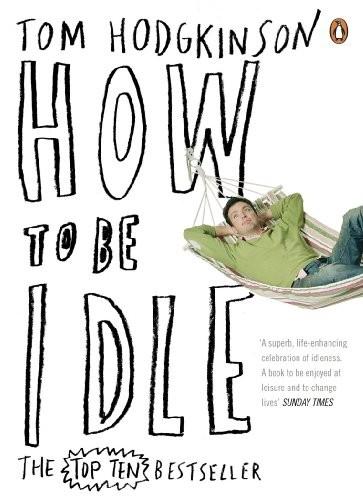
How to Be Idle
by
Tom Hodgkinson
Published 1 Jan 2004
The founders of great world religions were dedicated nappers, and indeed, it was during their roadside dozes that their visions often came. The nap is a sort of easy version of meditation. Jesus was an idler. Buddha was definitely an idler. Naps can even be life-saving. I recall a story of an Indian devotee of the meditation practice Raja Yoga who was caught up in the Bhopal disaster. She was in the meditation centre quite close to the chemical plant when the explosion happened. There was panic in the streets and many of those running from the gas cloud died. Something led her instead to take a shower, and then go to bed, pulling the blankets over her head. She survived unharmed when thousands were injured and died.
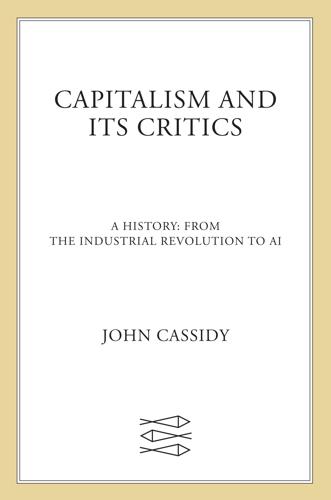
Capitalism and Its Critics: A History: From the Industrial Revolution to AI
by
John Cassidy
Published 12 May 2025
According to figures from the World Bank, India’s GDP per capita in inflation-adjusted terms rose from just $305.80 in 1960 to $2,239 in 2023, with most of the gains coming in the era of liberalization.)48 The social and environmental consequences of this transformation were also dramatic, however. Income inequality rose, and there were a series of environmental calamities, including the infamous Bhopal disaster of 1984, when a highly toxic gas leaked from a Union Carbide chemical plant, killing nearly four thousand people in the immediate aftermath. “Whether under state planning in the past or under the business-friendly regime now in place, India’s economic and technological policies have taken little (often no) account of the country’s resource endowments or of broader questions of environmental sustainability,” the historian Ramachandra Guha wrote in his authoritative 2018 biography of Gandhi.
…
Ayr Bank Babeuf, Gracchus Bacon, Anthony Baer, Werner Bailey, Brian Baily, Martin Bakunin, Michael Baldwin, Richard Baldwin, Stanley Bangkok Bank Charter Act Bank for International Settlements Bank of England Bank of United States banks; business financing and; central, and inflation; federal deposit insurance and; financial panics and; in Germany; Glass-Steagall and; Great Depression and; in Minsky’s theory; slave trade and; 2008 bailout of Baran, Paul Barbados Barbados Advocate, The barbarian societies Barbès, Armand Barclays Barnard College Barnett, Vincent BASF Batista, Fulgencio Bauer, Bruno Bauer, Otto Bayer Bay of Pigs invasion Beard, Charles and Mary Bear Stearns Bebel, August Beckerman, Wilfred Beckert, Sven Beit, Alfred Belgium Bell, Alexander Graham Bell, Clive Bell, Vanessa Bell Telephone Company Benares Benedictine monks Bengal Bennington College Bentham, Jeremy; Thompson and; Wheeler and Berlin; Luxemburg’s move to; Spartacist uprising in Berlin Wall Bernstein, Eduard Bethlem Royal Hospital Bethmann Hollweg, Theobald von Beveridge, William Beveridge Report Bezos, Jeff Bhagwati, Jagdish Bhopal disaster Biden, Joe bioeconomics Bioscience Birmingham guns Birmingham University Bismarck, Otto von Black, John Black Dwarf Black Jacobins, The (James) Black Marxism (Robinson) Black Reconstruction in America, 1860–1880 (Du Bois) Black Women for Wages for Housework Blair, Tony Blanc, Louis Blanqui, Adolphe Blanqui, Louis-Auguste Blanquist rising Bloomsbury Group Blundell, Brian Boers Boer War Bogdanov, V.
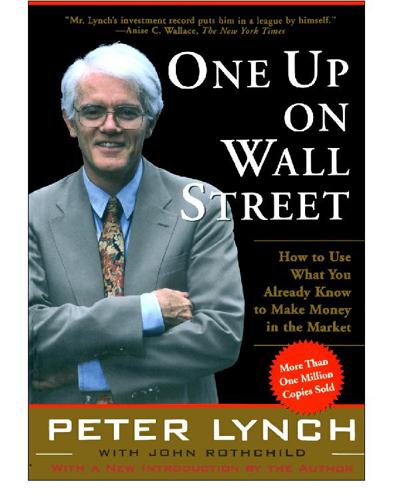
One Up on Wall Street
by
Peter Lynch
Published 11 May 2012
You had almost seven years to buy the stock after the place calmed down and all this good news had come out. The low of 3⅜ was reached in 1980, but you could still have gotten in for $15 a share in late 1985 and watched the stock hit $38 in October, 1988. I try to stay away from the tragedies where the outcome is unmeasurable, such as the Bhopal disaster at the Union Carbide plant in India. This was a terrible gas leak that resulted in thousands of deaths, and how much the families would get out of Union Carbide in damages was an open question. I invested in the Johns-Manville turnaround but sold at a modest loss after realizing there was no way to predict the extent of that company’s liability, either.
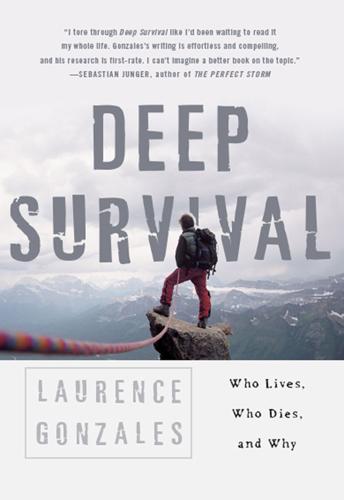
Deep Survival: Who Lives, Who Dies, and Why
by
Laurence Gonzales
Published 1 Dec 1998
Perrow is proposing the frightening idea that we are doing the best we can with what we’ve got. We are not asleep at the switch. We are doing what everyone does, what the best among us do, and when we have such an accident, it’s normal. The design of the human condition makes it easy for us to conceal the obvious from ourselves, especially under strain and pressure. The Bhopal disaster in India, the space shuttle Challenger explosion, the Chernobyl nuclear meltdown, and countless airliner crashes, all happened in part while people were denying the clear warnings before them, trying to land the model instead of the plane. The Matrix is an effort to manage wilderness risks using some of the same analytical tools that have been used in industry for more than a hundred years.

Adapt: Why Success Always Starts With Failure
by
Tim Harford
Published 1 Jun 2011
Index Abizaid, Lt General John, 44–5, 52, 55 , 65–6, 71 Académie des sciences, 107–8 ACCION International, 117 Admiralty, 122 aeronautics, 80–2, 84–5, 87–9, 112–14 Afghanistan, 67, 137; Operation Anaconda, 72, 74 AIG (American International Group), 189, 193–5, 215–16, 228 Air Ministry, British, 80–1, 85, 104 air travel, long-haul, 94 air-traffic control systems, 195 Allan, Maud, 87 Allen, Paul, 112 Allen, Vernon, 48–9 Allende, President Salvador, 69–72, 76 Amazon, 143–4, 223, 238 Amerian Brands, 9 Anaconda, 9 Ansari X Prize, 112 anthrax, 96–7 Apache Software Foundation, 230 Appert, Nicolas, 107 Apple, 11–12, 19 Ariely, Dan, 237–8 army, US: in Afghanistan, 72, 74; counterinsurgency strategy and, 52, 53–8, 59–61, 63–5, 66–7, 74, 75, 76–7, 79, 256, 262; first Gulf War and, 44, 53, 65, 66, 67, 71, 72–3, 74, 79; Forward Operating Bases (FOBs) in Iraq, 51–3, 57, 65; Haditha killings (19 November 2005), 37–9, 40, 42, 43, 52; local adaptation and, 53, 57–8, 66–7, 73, 74, 75, 76–8, 79; Donald Rumsfeld’s refusal of advice from, 43–4, 45, 46, 50, 57, 60, 62, 63, 65, 67, 223, 256; turnaround in Iraq, 35, 40, 46, 50–1, 53–6, 57–8, 59–61, 63–5, 78; Vietnam war, 46–7, 49–50, 56, 62, 64, 68, 69, 78, 244 Asch, Solomon, 47–8, 49 automobile industry, 10, 46–7, 94; CAFE standards in USA, 172–3, 176; niche cars, 90; Toyota Prius, 159, 161, 165 Aylwin-Foster, Brigadier Nigel, 61 Ayres, Ian, Supercrunchers, 235, 236 Azoulay, Pierre, 102 Bangladesh, 115–16, 117–18 Bangladesh Rural Advancement Committee (BRAC), 117 Bank of England, 195, 198–9 Bank of Scotland, 214 Barabási, Albert-László, 145 Barder, Owen, 141, 142 Barings Bank collapse (1995), 184–5, 208 Battersea Power Station, 171 Battle of Britain, 81–2, 89 Bay of Pigs invasion (April 1961), 41, 62–3 Bayer, 96–7 the Beatles, 260 Beattie, Geoff, Why Aren’t We Saving the Planet?, 165 Bechtel Corporation, 76, 77 Beer, Stafford, 69, 70, 72 Beinhocker, Eric, 3, 164 Belot, Michele, 30 Berlin Wall, fall of (1989), 26 Berners-Lee, Mike, How Bad Are Bananas?, 165 Bertrand, Marianne, 135 Bhopal disaster, 184 Billing, Noel Pemberton, 87–8 biomass systems, 170–1 bird flu, 97 Björkman, Martina, 142–3 Blair, Tony, 20, 30, 141 Boulton-Paul Defiant aircraft, 85 BP, 216–19, 245 Bradley, James, 106 Branson, Sir Richard, 112, 243 Brazil, 117, 148 breeding, selective, 175–6 Bremer, Paul, 1700000140345 >58 Brin, Sergey, 232 Bromgard, Jimmy Ray, 252 Buiter, Willem, 205 bulldog, British, 175–6 Bulow, Jeremy, 205 Bunting, Madeleine, 130 Burroughs 3500 computer, 69–71 Bush, Laura, 119 Bush, President George W., 20, 59, 64 business world: evolutionary theory and, 14–15, 16, 17, 18–19, 174–5, 233–4; failure in, 8–10, 11–12, 18–19, 36, 148–9, 224, 239–46; see also corporations and companies; economics and finance Cadbury’s dairy milk chocolate, 165 CAFE environmental standards in USA, 172–3, 176 Canon, 241 Capecchi, Mario, 97–101, 102, 114, 140, 152, 223 Carbon Trust, 163–5 Cardano, Gerolamo, 83 Carlsmith, James, 251> Case Foundation, 119 Casey, General George W., 55, 59, 71 catastrophe experts, 184–6, 191, 194–5, 208 Cave-Brown-Cave, Air Commodore Henry, 81, 83, 85, 88, 114 centralised decision making, 70, 74–5, 226, 227, 228; warfare and, 46–7, 67–8, 69, 71, 76, 78–9 centrally planned economies, 11, 21, 23–6, 68–9, 70 Challenger shuttle disaster, 184 Charles, Prince, 154 Chernobyl disaster, 185 Chile, 3, 69–72, 76, 148 China, 11, 94, 131, 143, 147, 150, 152 Christensen, Clayton, 239–40, 242, 245 Chuquicamata mine (Chile), 3 Churchill, Winston, 41–2, 82, 85 Citigroup, 205131 Clay Mathematics Institute, 110 climate change, 4, 20; carbon dioxide emissions and, 132, 156, 159–65, 166–9, 173, 176, 178–80; ‘carbon footprinting’, 159–66; carbon tax/price idea, 167–9, 178–80, 222; environmental regulations and, 169–74, 176, 177; ‘food miles’ and, 159, 160–1, 168; governments/politics and, 157–8, 163, 169–74, 176, 180; greenhouse effect and, 154–6; individual behaviour and, 158–63, 164, 165–6; innovation prizes and, 109, 179; methane and, 155, 156, 157, 159–60, 173, 179, 180; new technologies and, 94–5; simplicity/complexity paradox, 156, 157–8; Thaler-Sunstein nudge, 177–8; uncertainty and, 156 Coca-Cola, 28, 243 Cochrane, Archie, 123–7, 129, 130, 140, 238, 256 cognitive dissonance, 251–2 Cold War, 6, 41, 62–3 Colombia, 117, 147 complexity theory, 3–4, 13, 16, 49, 72103, 237 computer games, 92–3 computer industry, 11–12, 69, 70–1, 239–42 corporations and companies: disruptive technologies and, 239–44, 245–6; environmental issues and, 157–8, 159, 161, 165, 170–1, 172–3; flattening of hierarchies, 75, 224–5, 226–31; fraud and, 208, 210, 212–13, 214; innovation and, 17, 81–2, 87–9, 90, 93–4, 95–7, 108–11, 112, 114, 224–30, 232–4; limited liability, 244; patents and, 95–7, 110, 111, 114; randomised experiments and, 235–9; skunk works model and, 89, 91, 93, 152, 224, 242–3, 245; strategy and, 16, 18, 27–8, 36, 223, 224–34; see also business world; economics and finance cot-death, 120–1 credit-rating agencies, 188, 189, 190 Criner, Roy, 252 Crosby, Sir James, 211, 214, 250, 256 Cuban Missile Crisis, 41, 63 Cudahy Packing, 9 dairy products, 158, 159–60, 164–5, 166 Darwin, Charles, 86 Dayton Hudson, 243 de Montyon, Baron, 107–8 Deal or No Deal (TV game show), 33–5, 253 decentralisation, 73, 74–8, 222, 224–5, 226–31; Iraq war and, 76–8, 79; trial and error and, 31, 174–5, 232, 234 decision making: big picture thinking, 41, 42, 46, 55; consistent standards and, 28–9; diversity of opinions, 31, 44–5, 46, 48–50, 59–63; doctrine of unanimous advice, 30–1, 47–50, 62–3, 64, 78; grandiosity and, 27–8; idealized hierarchy, 40–1, 42, 46–7, 49–50, 55, 78; learning from mistakes, 31–5, 78, 119, 250–1, 256–9, 261–2; local/on the ground, 73, 74, 75, 76–8, 79, 224–5, 226–31; reporting lines/chain of command, 41, 42, 46, 49–50, 55–6, 58, 59–60, 64, 77–8; supportive team with shared vision, 41, 42, 46, 56, 62–3; unsuccessful, 19, 32, 34–5, 41–2; see also centralised decision making Deepwater Horizon disaster (April 2010), 36, 216–19, 220 Democratic Republic of Congo, 139–40 Deng Xiaoping, 1 Denmark, 148 Department for International Development (DFID), 133, 137–8 development aid: charter cities movement, 150–3; community-driven reconstruction (CDR), 137–40; corruption and, 133–5, 142–3; economic ‘big push’ and, 143–5, 148–9; feedback loops, 141–3; fundamentally unidentified questions (FUQs), 132, 133; governments and, 118, 120, 143, 144, 148–9; identification strategies, 132–5; microfinance, 116, 117–18, 120; Millennium Development Villages, 129–30, 131; product space concept, 145–8; randomised trials and, 127–9, 131, 132, 133, 134, 135–6, 137–40, 141; randomistas, 127–9, 132, 133, 135–40, 258; selection principle and, 117, 140–3, 149; SouthWest project in China, 131; success and failure, 116, 118–20, 130–1; Muhammad Yunus and, 116, 117–18 digital photography, 240–1, 242 Dirks, Ray, 211–12, 213 disk-drive industry, 239–40, 242 Djankov, Simeon, 135 domino-toppling displays, 185, 200–1 Don Basin (Russia), 21–2, 24, 27 dot-com bubble, 10, 92 Dubai, 147, 150 Duflo, Esther, 127, 131, 135, 136 Dyck, Alexander, 210, 213 eBay, 95, 230 econometrics, 132–5 economics and finance: banking system as complex and tightly coupled, 185, 186, 187–90, 200, 201, 207–8, 220; bankruptcy contingency plans, 204; Basel III regulations, 195; bond insurance business, 189–90; bridge bank/rump bank approach, 205–6; capital requirements, 203, 204; centrally planned economiepos=0000032004 >11, 21, 23–6, 68–9, 70; CoCos (contingent convertible bonds), 203–4; complexity and, 3–4; decoupling of financial system, 202, 203–8, 215–16, 220; Dodd-Frank reform act (2010), 195; employees as error/fraud spotters, 210, 211, 212, 213, 215; energy crisis (1970s), 179; evolutionary theory and, 14–17, 18–19, 174–5; improvements since 1960s, 215; inter-bank payments systems, 207; latent errors and, 209–10, 215; ‘LMX spiral’, 183–4, 189; narrow banking approach, 206–7, 215; need for systemic heat maps, 195–6; reinsurance markets, 183; zombie banks, 201–2; see also business world; corporations and companies; financial crisis (from 2007) Edison, Thomas, 236, 238 Eliot, T.S., 260 Elizabeth House (Waterloo), 170–1, 172 Endler, John, 221–2, 223, 234, 239 Engineers Without Borders, 119 Enron, 197–8, 200, 208, 210 environmental issues: biofuels, 84, 173, 176; clean energy, 91, 94, 96, 245–6; corporations/companies and, 159, 161, 165, 170–1, 172–3; renewable energy technology, 84, 91, 96, 130, 168, 169–73, 179, 245; see also climate change Equity Funding Corporation, 212 Ernst and Young, 199 errors and mistakes, types of, 208–10; latent errors, 209–10, 215, 218, 220 European Bank for Reconstruction and Development (EBRD), 188 European Union, 169, 173 Evans, Martin, 100 evolutionary theory, 6, 12–13, 15–17, 174, 258; business world and, 14–17, 174–5, 233–4; Darwin and, 86; digital world and, 13–14, 259–60; economics and, 14–17, 174–5; Endler’s guppy experiments, 221–2, 223, 239; fitness landscapes, 14–15, 259; Leslie Orgel’s law, 174, 175, 176, 177, 178, 180; problem solving and, 14–15, 16; selective breeding and, 175–6 expertise, limits of, 6–8, 16, 17, 19, 66 extinction events, biological, 18–19 Exxon (formerly Jersey Standard), 9, 12, 188, 245 F-22 stealth fighter, 93 Facebook, 90, 91 failure: in business, 8–10, 11–12, 18–19, 36, 148–9, 224, 239–46; chasing of losses, 32–5, 253–4, 256; in complex and tightly coupled systems, 185–90, 191–2, 200, 201, 207–8, 219, 220; corporate extinctions, 18–19; denial and, 32, 34–5, 250–3, 255–6; disruptive technologies, 239–44, 245–6; of established industries, 8–10; government funding and, 148–9; hedonic editing and, 254; honest advice from others and, 256–7, 258, 259; learning from, 31–5, 78, 119, 250–1, 256–9, 261–2; modern computer industry and, 11–12, 239–42; as natural in market system, 10, 11, 12, 244, 245–6; niche markets and, 240–2; normal accident theory, 219; recognition of, 36, 224; reinterpreted as success, 254–5, 256; shifts in competitive landscape, 239–46; ‘Swiss cheese model’ of safety systems, 186–7, 190, 209, 218; types of error and mistake, 208–10; willingness to fail, 249–50, 261–2; of young industries, 10 Fearon, James, 137, Federal Aviation Administration, 210 Federal Reserve Bank, 193–4 feedback, 25, 26, 42, 178, 240; in bureaucratic hierarchies, 30–1; development and, 141–3; dictatorships’ immunity to, 27; Iraq war and, 43–5, 46, 57–8, 59–62; market system and, 141; praise sandwich, 254; public services and, 141; self-employment and, 258; yes-men and, 30 Feith, Douglas, 44, 45 Ferguson, Chris ‘Jesus’, 32 Fermi nuclear reactor (near Detroit), 187 Festinger, Leon, 251 financial crisis (from 2007), 5, 11, 25; AIG and, 189, 193–5, 215–16, 228; bankers’ bonuses, 198; banking system as complex and tightly coupled, 185, 186, 187–90, 200, 201, 207–8, 220; bond insurance business and, 189–90; collateralised debt obligations (CDOs), 190, 209; credit default swaps (CDSs), 187–9, 190, 194; derivatives deals and, 198, 220; faulty information systems and, 193–5; fees paid to administrators, 197; government bail-outs/guarantees, 202, 214, 223; Lehman Brothers and, 193, 194, 196–200, 204–5, 208, 215–16; ‘LMX spiral’ comparisons, 183–4, 189; Repo 105 accounting trick, 199 Financial Services Authority (FSA), 214 Firefox, 221, 230 Fleming, Alexander, 83 Food Preservation prize, 107, 108 Ford Motor Company, 46–7 fossil record, 18 Fourier, Joseph, 155 fraud, corporate, 208, 210, 212–13, 214 Friedel, Robert, 80 Frost, Robert, 260 A Funny Thing Happened on the Way to the Forum (musical), 248 Gage, Phineas, 21, 27 Galapagos Islands, 86, 87 Gale (US developer), 152 Galenson, David, 260 Galileo, 187 Galland, Adolf, 81 Gallipoli campaign (1915), 41–2 Galvin, Major General Jack, 62, 256 game theory, 138, 205 Gates, Bill, 110, 115 Gates, Robert, 59, 64, 78 Gates Foundation, 110 Geithner, Tim, 193–5, 196 GenArts, 13 General Electric, 9, 12, 95 Gilbert, Daniel, 255, 256 GlaxoSmithKline, 95 Glewwe, Paul, 127–8 Global Positioning System (GPS), 113 globalisation, 75 Google, 12, 15, 90, 91, 239, 245, 261; corporate strategy, 36, 231–4; Gmail, 233, 234, 241, 242; peer monitoring at, 229–30 Gore, Al, An Inconvenient Truth, 158 Göring, Hermann, 81 government and politics: climate change and, 157–8, 163, 169–74, 176, 180; development aid and, 118, 120, 143, 144, 148–9; financial crisis (from 2007) and, 193–5, 198–9, 202, 214, 215–16, 223; grandiosity and, 27–8; ideal hierarchies and, 46pos=00002pos=0000022558 >7, 49–50, 62–3, 78; innovation funding, 82, 88, 93, 97, 99–101, 102–3, 104, 113; lack of adaptability rewarded, 20; pilot schemes and, 29, 30; rigorous evaluation methods and, 29* Graham, Loren, 26 Grameen Bank, 116, 117 Greece, 147 Green, Donald, 29* greenhouse effect, 154–6 Gulf War, first, 44, 53, 65, 66, 67, 71; Battle of 73 Easting, 72–3, 74, 79 Gutenberg, Johannes, 10 Haldane, Andrew, 195, 258 Halifax (HBOS subsidiary), 211 Halley, Edmund, 105 Halliburton, 217 Hamel, Gary, 221, 226, 233, 234 Hanna, Rema, 135 Hannah, Leslie, 8–10, 18 Hanseatic League, 150 Harrison, John, 106–7, 108, 110, 111 Harvard University, 98–9, 185 Hastings, Reed, 108 Hausmann, Ricardo, 145 Hayek, Friedrich von, 1, 72, 74–5, 227 HBOS, 211, 213, 214 healthcare sector, US, 213–14 Heckler, Margaret, 90–1 Henry the Lion, 149, 150, 151–2, 153 Hewitt, Adrian, 169 Hidalgo, César, 144–7, 148 Higginson, Peter, 230 Hinkley Point B power station, 192–3, 230–1 Hitachi, 11 Hitler, Adolf, 41, 82, 83, 150 HIV-AIDS, 90–1, 96, 111, 113 Holland, John, 16, 103 Hong Kong, 150 Houston, Dame Fanny, 88–9, 114 Howard Hughes Medical Institute (HHMI), 101–3, 112 Hughes (computer company), 11 Humphreys, Macartan, 136, 137, 138–40 Hurricane aircraft, 82* IBM, 11, 90, 95–6 In Search of Excellence (Peters and Waterman, 1982), 8, 10 India, 135, 136, 143, 147, 169 individuals: adaptation and, 223–4, 248–62; climate change and, 158–63, 164, 165–6; experimentation and, 260–2; trial and error and, 31–5 Indonesia, 133–4, 142, 143 Innocentive, 109 innovation: corporations and, 17, 81–2, 87–9, 90, 93–4, 95–7, 108–11, 112, 114, 224–30, 232–4; costs/funding of, 90–4, 99–105; failure as price worth paying, 101–3, 104, 184, 215, 236; government funding, 82, 88, 93, 97, 99–101, 102–3, 104, 113; grants and, 108; in health field, 90–1, 96; large teams and specialisation, 91–4; market system and, 17, 95–7, 104; new technologies and, 89–90, 91, 94–5; parallel possibilities and, 86–9, 104; prize methodology, 106–11, 112, 113–14, 179, 222–3; randomistas and, 127–9, 132, 133, 135–40, 258; return on investment and, 83–4; skunk works model, 89, 91, 93, 152, 224, 242–3, 245; slowing down of, 90–5, 97; small steps and, 16, 24, 29, 36, 99, 103, 143, 149, 153, 224, 259–60; space tourism, 112–13, 114; specialisation and, 91–2; speculative leaps and, 16, 36, 91, 99–100, 103–4, 259–60; unpredictability and, 84–5 Intel, 11, 90, 95 International Christelijk Steunfonds (ICS), 127–9, 131 International Harvester, 9 International Rescue Committee (IRC), 137–8, 139 internet, 12, 15, 63, 90, 113, 144, 223, 233, 238, 241; randomised experiments and, 235–6, 237; see also Google Iraq war: al Anbar province, 56–7, 58, 64, 76–7; civil war (2006), 39–40; Commander’s Emergency Response Program (CERP), 77; counterinsurgency strategy, 43, 45, 55–6, 58, 60–1, 63–4, 65; decentralisation and, 76–8, 79; feedback and, 43–5, 46, 57–8, 59–62; FM 3–24 (counter-insurgency manual), 63; Forward Operating Bases (FOBs), 51–3, 57, 65; Haditha killings (19 November 2005), 37–9, 40, 42, 43, 52; new technologies and, 71, 72, 74, 78–9, 196; Samarra bombing (22 February 2006), 39; Tal Afar, 51, 52, 53–5, 61, 64, 74, 77, 79; trial and error and, 64–5, 66–7; US turnaround in, 35, 40, 46, 50–1, 53–6, 57–8, 59–61, 63–5, 78; US/allied incompetence and, 38, 39–40, 42–5, 46, 50, 64, 67, 79, 223; Vietnam parallels, 46 J&P Coats, 9 Jacobs, Jane, 87 James, Jonathan, 30 Jamet, Philippe, 192 Janis, Irving, 62 Japan, 11, 143, 176, 204, 208 Jay-Z, 119 Jo-Ann Fabrics, 235 Jobs, Steve, 19 Joel, Billy, 247–8, 249 Johnson, President Lyndon, 46, 47, 49–50, 60, 62, 64, 78 Jones, Benjamin F., 91–2 Joyce, James, 260 JP Morgan, 188 Kahn, Herman, 93 Kahneman, Daniel, 32, 253 Kantorovich, Leonid, 68–9, 76 Kaplan, Fred, 77 Karlan, Dean, 135 Kauffmann, Stuart, 16, 103 Kay, John, 206–7, 208, 215, 259 Keller, Sharon, 252 Kelly, Terri, 230 Kennedy, President John F., 41, 47, 62–3, 84, 113 Kenya, 127–9, 131 Kerry, John, 20 Keynes, John Maynard, 181 Kilcullen, David, 57, 60–1 Klemperer, Paul, 96, 205 Klinger, Bailey, 145 Kotkin, Stephen, 25 Kremer, Michael, 127–8, 129 Krepinevich, Andy, 45 Lanchester, John, 188 leaders: decision making and, 40–2; failure of feedback and, 30–1, 62; grandiosity and, 27–8; ignoring of failure, 36; mistakes by, 41–2, 56, 67; need to believe in, 5–6; new leader as solution, 59 Leamer, Ed, 132* Leeson, Nick, 184–5, 208 Lehman Brothers, 193, 194, 196–200, 204–5, 208, 215–16 Lenin Dam (Dnieper River), 24 Levine, John, 48–9 Levitt, Steven, 132–3 Liberia, 136–9 light bulbs, 162, 177 Lind, James, 122–3 Lindzen, Richard, 156 Livingstone, Ken, 169 Lloyd’s insurance, 183 Lloyds TSB, 214 Local Motors, 90 Lockheed, Skunk Works division, 89, 93, 224, 242 Lomas, Tony, 196, 197–200, 204, 205, 208, 219 Lomborg, Bjorn, 94 longitude problem, 105–7, 108 Lu Hong, 49 Lübeck, 149–50, 151–2, 153 Luftwaffe, 81–2 MacFarland, Colonel Sean, 56–7, 64, 74, 76–7, 78 Mackay, General Andrew, 67–8, 74 Mackey, John, 227, 234 Madoff, Bernard, 208212–13 Magnitogorsk steel mills, 24–5, 26, 153 Malawi, 119 Mallaby, Sebastian, 150, 151 management gurus, 8, 233 Manhattan Project, 82, 84 Manso, Gustavo, 102 Mao Zedong, 11, 41 market system: competition, 10–11, 17, 19, 75, 95, 170, 239–46; ‘disciplined pluralism’, 259; evolutionary theory and, 17; failure in as natural, 10, 11, 12, 244, 245–6; feedback loops, 141; innovation and, 17, 95–7, 104; patents and, 95–7; trial and error, 20; validation and, 257–8 Markopolos, Harry, 212–13 Marmite, 124 Maskelyne, Nevil, 106 mathematics, 18–19, 83, 146, 247; financial crisis (from 2007) and, 209, 213; prizes, 110, 114 Mayer, Marissa, 232, 234 McDonald’s, 15, 28 McDougal, Michael, 252 McGrath, Michael, 252 McMaster, H.R.

Coding Freedom: The Ethics and Aesthetics of Hacking
by
E. Gabriella Coleman
Published 25 Nov 2012
As noted by two lawyers who work on software and law, “coders are people who write in subtle, rule-oriented, specialized, and remarkably complicated dialects”—something, they argue, that also pertains to how lawyers make and interpret the law (Cohn and Grimmelmann 2003).2 This helps us understand why it has been relatively easy for developers to integrate the law into everyday technical practice and advocacy work, and avoid some of the frustration that afflicts lay advocates trying to acquire legal fluency to make larger political claims. For example, in describing the activists who worked on behalf of the victims of the Bhopal disaster, Kim Fortun (2001, 25–54) perceptively shows how acquiring legal fluency (or failing to adequately do so) and developing the correct legal strategy is frustrating, and can lead to cynicism. Many hackers are similarly openly cynical about the law because it is seen as easily subject to political manipulation; others would prefer not to engage with the law as it takes time away from what they would rather be doing—hacking.
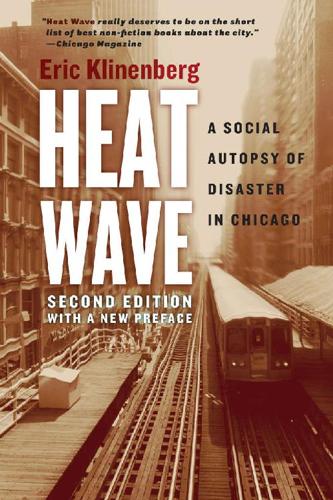
Heat Wave: A Social Autopsy of Disaster in Chicago
by
Eric Klinenberg
Published 11 Jul 2002
In his study of the Titanic disaster, Steven Biel (1996) calls attention to the myths of social consensus that masked the extreme class differences in the Titanic mortality levels. One minister observed that “‘[t]he rich died and the poor died alike’ . . . which was probably true in individual cases though not in the aggregate” (Biel 1996, 45). The anthropologist Veena Das (1995) recalls a similar story in her analysis of the Bhopal disaster in India. 9. Throughout this book I use the term ethnoracial to describe the basis of identities reputed to be based on “race” or “ethnicity.” There are particularly compelling reasons for refusing to use the term race outside of quotation marks so as to deny it status as an analytic term; for although “race” is a social fact of modern life, the term carries with it the historical resonance of a scientific fact rooted in biology even though such ideas have been largely refuted.

What Technology Wants
by
Kevin Kelly
Published 14 Jul 2010
But because of the tight interdependence of parts, minor glitches in the right improbable sequence cascade until the trouble becomes an unstoppable wave and reaches catastrophic proportions. Sociologist Charles Perrow calls these “normal accidents” because they “naturally” emerge from the dynamics of large systems. The system is to blame, not the operators. Perrow did an exhaustive minute-by-minute study of 50 large-scale technological accidents (such as Three Mile Island, the Bhopal disaster, Apollo 13, Exxon Valdez, Y2K, etc.) and concluded, “We have produced designs so complicated that we cannot anticipate all the possible interactions of the inevitable failures; we add safety devices that are deceived or avoided or defeated by hidden paths in the systems.” In fact, Perrow concludes, safety devices and safety procedures themselves often create new accidents.
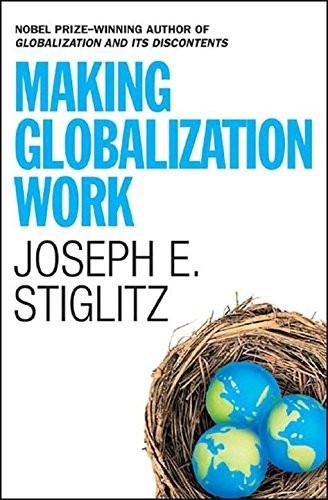
Making Globalization Work
by
Joseph E. Stiglitz
Published 16 Sep 2006
Stiglitz, “Information, Finance and Markets: The Architecture of Allocative Mechanisms,” Industrial and Corporate Change, vol. 1, no. 1 (1992), pp. 37–63. 11.The Bhopal episode has been extensively covered in the press and elsewhere. See, for example, Amnesty International, Clouds of Injustice: Bhopal Disaster 20 Years On (London: Amnesty International, 2004), available at http://web.amnesty.org/library/Index/ENGASA201042004? open&of=ENG-398. 12.These are not the only instances in which multinationals use politics; business executives who talk about the importance of keeping government out of the way are quite willing to call upon governments for assistance when they need it.
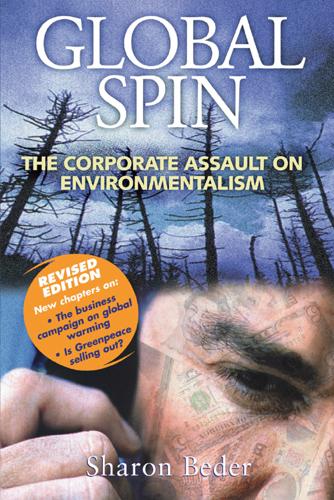
Global Spin: The Corporate Assault on Environmentalism
by
Sharon Beder
Published 1 Jan 1997
Both have been involved in protecting some of the worst industries of our times, downplaying the health effects of smoking on behalf of the Tobacco Institute, keeping public concern at a minimum after the Three Mile Island nuclear accident, and helping to clean up Exxon’s image after the Exxon Valdez oil spill.20 Hill & Knowlton have helped to keep petrol taxes low on behalf of the American Petroleum Institute, have campaigned for deregulation for the American Truckers Association, been retained by apple growers to fight claims about Alar, worked with the American Association of Advertising Agencies to clean up the image of advertising, helped the National Conference of Catholic Bishops oppose abortion, and advised supporters of the Rev. Sun Myung Moon.21 Burson-Marsteller has helped corporations out of crises such as the Bhopal disaster (Union Carbide) and the Dalkon Shield IUD controversy (A.H.Robins).22 Hill & Knowlton tells potential clients: “If your company or organisation faces a challenge from central, state or local government, you will need to campaign. Hill & Knowlton’s worldwide Public Affairs practice organizes campaigns which draw on professional expertise in policy forecasting, media relations, grassroots communications and direct political advocacy.”

Collapse
by
Jared Diamond
Published 25 Apr 2011
In the long run, it is the public, either directly or through its politicians, that has the power to make destructive environmental policies unprofitable and illegal, and to make sustainable environmental policies profitable. The public can do that by suing businesses for harming them, as happened after the Exxon Valdez, Piper Alpha, and Bhopal disasters; by preferring to buy sustainably harvested products, a preference that caught the attention of Home Depot and Unilever; by making employees of companies with poor track records feel ashamed of their company and complain to their own management; by preferring their governments to' award valuable contracts to businesses with a good environmental track record, as the Norwegian government did to Chevron; and by pressing their governments to pass and enforce laws and regulations requiring good environmental practices, such as the U.S. government's new regulations for the coal industry in the 1970s and 1980s.
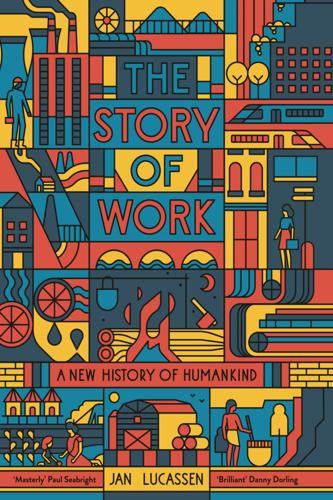
The Story of Work: A New History of Humankind
by
Jan Lucassen
Published 26 Jul 2021
Women’s Working Lives in East Asia (Stanford: Stanford UP, 2001). Broadberry, Stephen, Rainer Fremdling & Peter Solar. ‘Industry’, in Stephen Broadberry & Kevin H. O’Rourke (eds), The Cambridge Economic History of Modern Europe, Vol. I: 1700–1870 (Cambridge: CUP, 2010), pp. 164–86. Broughton, Edward. ‘The Bhopal Disaster and its Aftermath: A Review’, Environmental Health, 4(1) (2005), pp. 1–6. Brown, Kyle et al. ‘An Early and Enduring Advanced Technology Originating 71,000 Years Ago in South Africa’, Nature, 491 (22 November 2012), pp. 590–3. Brown, William & Jonathan Trevor. ‘Payment Systems and the Fall and Rise of Individualism’, Historical Studies in Industrial Relations, 35 (2014), pp. 143–55.
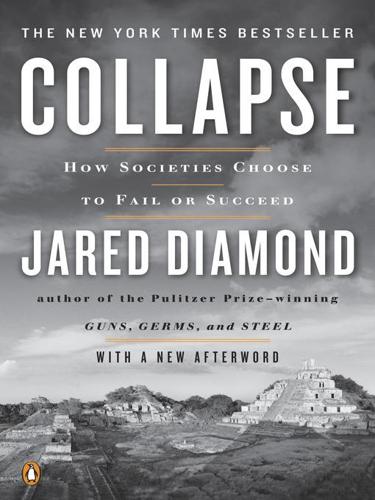
Collapse: How Societies Choose to Fail or Succeed
by
Jared Diamond
Published 2 Jan 2008
In the long run, it is the public, either directly or through its politicians, that has the power to make destructive environmental policies unprofitable and illegal, and to make sustainable environmental policies profitable. The public can do that by suing businesses for harming them, as happened after the Exxon Valdez, Piper Alpha, and Bhopal disasters; by preferring to buy sustainably harvested products, a preference that caught the attention of Home Depot and Unilever; by making employees of companies with poor track records feel ashamed of their company and complain to their own management; by preferring their governments to award valuable contracts to businesses with a good environmental track record, as the Norwegian government did to Chevron; and by pressing their governments to pass and enforce laws and regulations requiring good environmental practices, such as the U.S. government’s new regulations for the coal industry in the 1970s and 1980s.